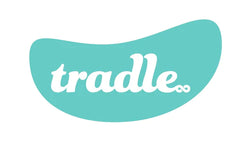Written by Teghan Acres
When you dive into the cold ocean waves that hug British Columbia’s coastline, can you believe that you are swimming through water that was once in your washing machine? It’s true, and unfortunately, that water is washing tiny pollutants called microfibres into our oceans.
Microfibres are minuscule pieces of the materials that make up textile products such as clothing and towels. The majority of our textiles today are made out of synthetic materials, such as polyester and spandex. Synthetics are petroleum products, which means that many microfibres are also microplastics.

Illustration by Natural Clothing
Microplastics are plastic pieces smaller than 5mm in size that can come from a variety of sources including broken-down plastic bottles and microbeads in cosmetic products2. These tiny plastics are harmful because they are being eaten by fish and wildlife, which not only negatively impacts marine life, but also the humans that eat them. Although global awareness of the negative impacts of single-use plastics has skyrocketed in the past few years, we aren’t realizing that another culprit is the clothing we put on each morning. 1.5 million tons of microplastics enter the ocean annually, and as much as 34.8% of that comes from synthetic textiles1.

Results of the OceanWise study looking for microfibers in laundry effluent, wastewater and seawater2
OceanWise conducted a study that found that approximately 60% of the 30 billion microplastics emitted annually by a secondary wastewater treatment facility in Vancouver are microfibres2. That’s 18 billion microfibres shedding off our clothing and into the ocean each year. To put this number into the perspective of a single laundry cycle, each garment can release 120 to 730,000 microfibres per wash2.
So, if our clothing is shedding these harmful microfibres, and we’re not about to start walking around naked all the time, what do we do? The answer goes back to the seemingly minor, but immensely impactful, choice of what material our clothing is made of.
Tradle partners with brands that are using sustainable materials and accounting for the entire lifecycle of each garment. For example, Nudnik produces t-shirts from pre-consumer textile waste made out of 100% organic cotton materials. They have engineered their garments to be made solely from organic cotton which makes the shirt easily compostable at the end of its life.

Nudnik t-shirts
Many of our brand partners, such as Greige and Parade, use organic cotton because it is farmed without the use of synthetic pesticides and chemical fertilizers. Conventional cotton uses a staggering 220,000 tons of pesticides and 8.8 million tons of fertilizer each year2. Look for organic cotton that is certified by Global Organic Textile Standard (GOTS) or the Organic Content Standard (OCS) for assurance that brands are staying true to their sustainability claims. The Good Tee is both GOTS and Fairtrade certified to uphold the values of transparency and ethics at their company.

The makeup of The Good Tee’s T-shirts
You will find hemp, linen, pure Merino wool, and cork in our lineup as we are not only choosing environmentally sustainable fabrics, but fabrics that are also comfortable and durable for everyday life. A sustainable garment is made ethically and organically as well as made to last so that we can reduce our need for additional resources. Tradle satisfies this requirement by ensuring that our collections are enjoyed by as many families as possible before being responsibly disposed of.
Many of you have clothing in your closet made from synthetic materials that you shouldn’t go to throw away as soon as you finish reading this blog. Innovative microfibre filters such as the coraball and guppyfriend are available for less than $40. These work similar to a lint trap to catch the fibres before they ever leave your washing machine.

Microfiber pollution reduction tips from OceanWise2
Next time you’re out shopping for you or your mini me, take a second to look at the tag for what makes up the piece. Choose a natural fibre when possible and know that you’re making the best decision for the health of your planet.
Sources:
1 The Conscious Closet | Elizabeth L. Cline
2 Me, My Clothes and the Ocean | OceanWise

